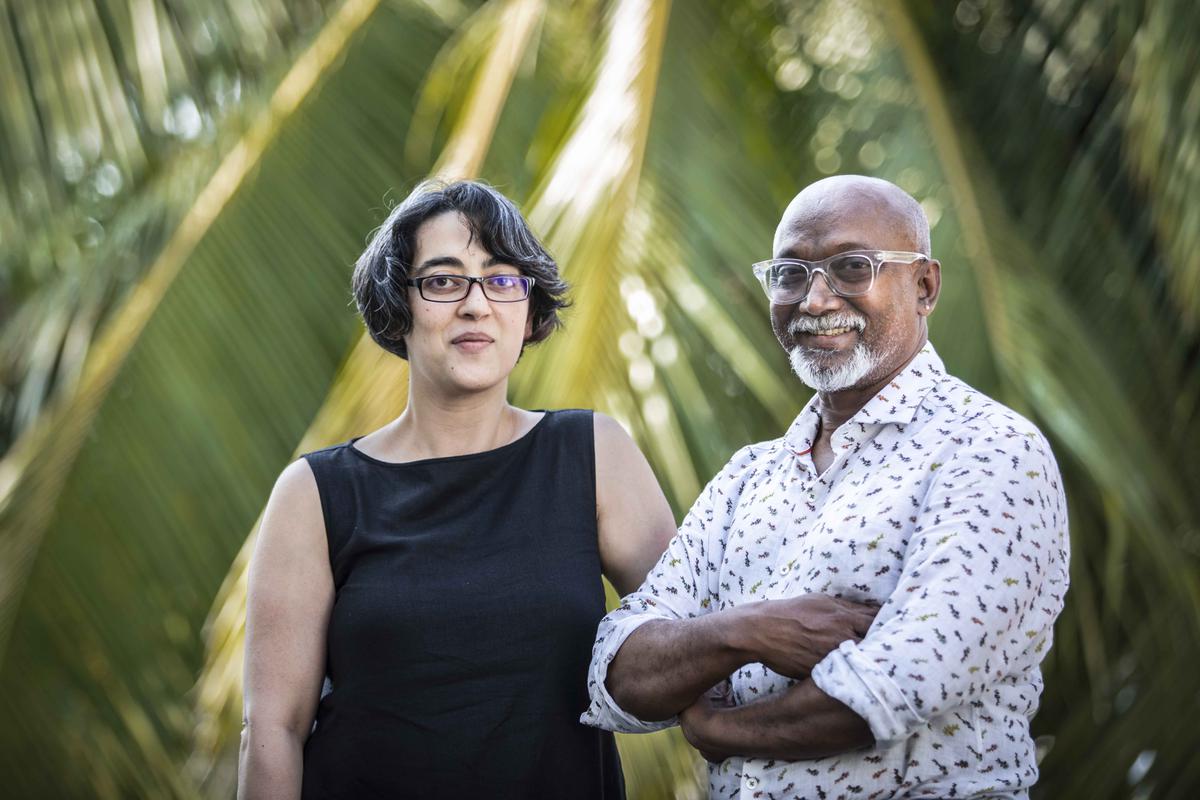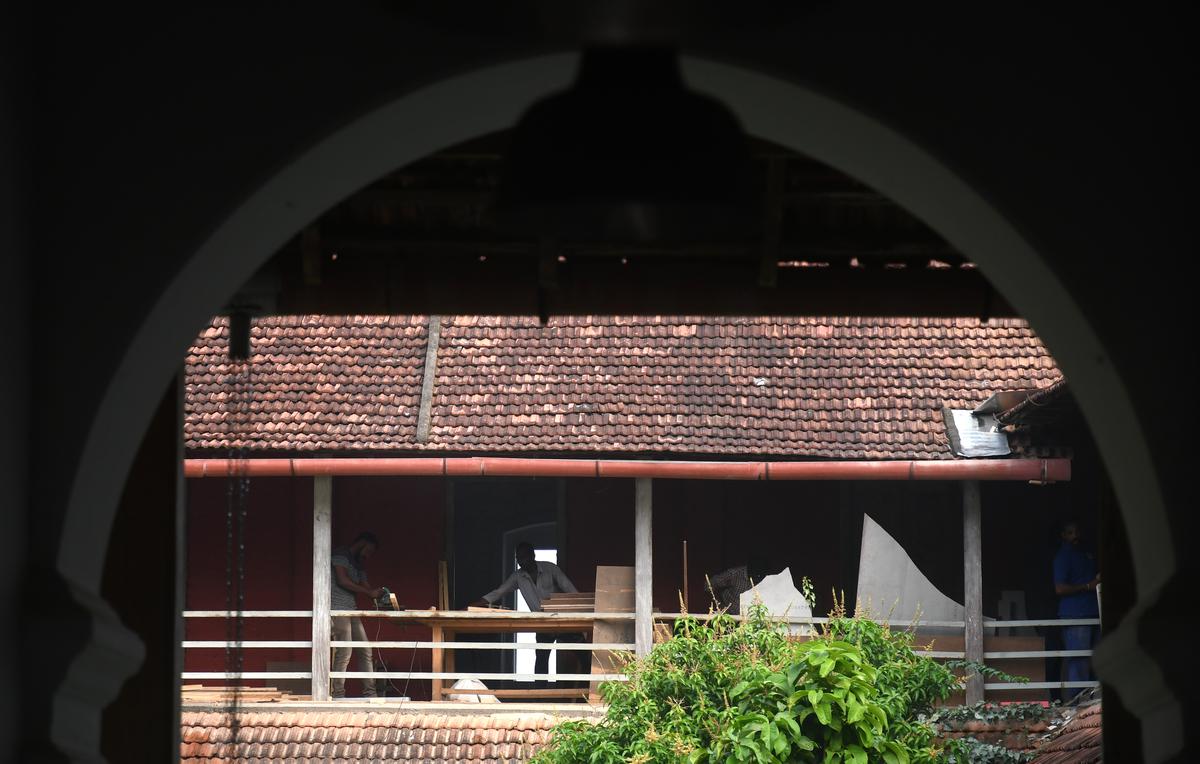Out of the blues, emerges Biennale
“Mark Your Calendars: December 12, 2022 to April 10, 2023”. This post on the Kochi Biennale Foundation’s Instagram handle on June 8 ended months of uncertainty. The fifth edition of the Kochi Muziris Biennale should have taken place in 2020-2021 but was deferred twice and finally cancelled in the wake of the COVID-19 pandemic. Since its inception in 2012, the mega art show has over its past editions built an international reputation for novelty, innovation, and eclectic art. Now in its 10th year, this edition is seminal in more ways than one.
When KMB-5 was first deferred in November 2020, and later cancelled, much of the spadework had already been done. Curator Shubigi Rao, the India-born, Singaporean artist, had travelled to studios across the world to zero in on 90 artists and keyed in the curatorial note on her phone “at busy and noisy airports”.
Many of the artists had begun work and Fort Kochi, which plays host, had begun to gear up to welcome droves of tourists. Finally, when the festival was cancelled, there were deliberations about a scaled-down festival with COVID-19 protocols in place. In April 2021, ‘Lokame Tharavadu’ opened in the old port town of Alappuzha and showcased the contemporary visual artists of Kerala. Later the foundation also contemplated holding the event in a hybrid form: a physical show for Southeast Asia and a digital one for Europe and America. But all that was not to be.
The countdown to the four-month exhibition is underway. ‘In Our Veins, Flow Ink and Fire’ is the curatorial title, decided before the hardships of the pandemic overtook the world. Ironically it speaks of a resilience derived from thought and action that kept us afloat during the dark days. “How do we regain our power? Only through the spirit that flows through us: the thoughts and the action; the ink and the fire,” explains Ms. Rao, adding that the title is also about “the transgressive power of ink (words, poetry, art, music) and the reformative power of action (fire).”
Speaking of the challenges of curation, she points out that while the pandemic affected everyone globally, artists, in particular, were hit hard, “as we live more precariously. Many artists could not produce during the pandemic so their source of income closed. A number of art councils cut funding for art and education. So, we are dealing with a lot of fatigue. No one can last in such circumstances and I am humbled at how the artists have stayed on”.
If artists were affected so were artisans and crafters, who form the backbone of producing an event of this stature. Worldwide and locally several fabricating units and workshops shut down, leaving the art fraternity with fewer options. Shipping charges shot up and artists were left with fewer environmental choices. “Every large-scale exhibition like this has its own set of challenges but I would say that the pandemic has turned it more intense,” remarks Ms. Rao.

The curator of KMB-5, Shubigi Rao, with Bose Krishnamachari, co-founder and president, Kochi Muziris Foundation.
| Photo Credit:
Kochi Biennale Foundation
Riding the storm, so to speak, are 45 new commissions “made specially for the Kochi-Muziris Biennale” that celebrates the various strategies artists employed to survive. “One of the distinctive changes is that there’s a large volume of video work because people have moved to digital,” explains Ms. Rao. She cites the example of South American artist Claudia Martinez Garay, who has sent a video work, and not a planned installation, as her studio was shut during the health crisis. She is exhibiting a video work. Similarly, a collective of woman photographers from Myanmar could not produce due to the coup in the country.
“Artists were responding to the toughest situations across the world and in their contexts,” says Mario D’Souza, Director of Programmes and a member of the curatorial team. While 40% of the works are digital, he says there are also paintings, sculptures, installations and performances. “The Biennale also has a lot of songs, singing, and music.”
Goa-based artist Sahil Naik’s All is Water, and To Water We Must Return, which will be shown at the hangar in Aspinwall House, offers a musical narrative with folk songs set in a life-size landscape of Curdi, a village in Goa that disappeared with the building of the Salaulim Dam. The Mumbai collective, Camp, presents a film on Mumbai using a protest song. Up, Down, Sideways, a film on a community of rice farmers from the Northeast by the Uramili project, has charming renditions of their songs. “There is lots of joy, hope, and celebration,” says Mr. D’Souza.
Baroda-based Malayali artist Vasudevan Akkitham presents an almanac of a lost year (2020-21) that features the angst and hope of every single day during the pandemic lockdowns at Coir Godown in Aspinwall House. Delhi-based filmmaker Priya Sen’s film essay No Stranger at All, too touches upon the lockdown and the protests in New Delhi.
Mr. D’Souza says that the event’s 10th year was a landmark moment that required reflection, repair and recalibration. “We are a people’s Biennale. This year the programme opens itself out to a range of formats from across the region, working across a diversity of contexts and conditions.” While continuing with their flagship programmes such as the Student’s Biennale and Art By Children(ABC), the organisers introduced new initiatives by replacing Collaterals with ‘Invited Exhibitions’ that bring exhibition formats from Asia and Africa to share KMB’s primary sites in Fort Kochi. These include the Kathmandu Triennale, Chennai Photo Biennale and Savvy Contemporary along with a special presentation, Tangled Hierarchy, curated by Jitish Kallat for the John Hansard Gallery and the Kiran Nadar Museum of Art. A new work by acclaimed South African artist William Kentridge too is an Invited exhibition.
“A first this time is a space dedicated to artists of Kerala,” says Boney Thomas, Trustee, KMF. The Durbar Hall, a central venue in mainland Kochi, will be the venue for Idam: Where Being Sprouts into Language, a curated show of contemporary art practices from Kerala by visual artists Gigi Scaria, P.S. Jalaja and Radha Gomathy. Excited at the “long overdue” step, Ms. Gomathy says that artists of Kerala have calibre, identity and potential to be on international stage. The show will exhibit nearly 30 works, presenting a survey of the contemporary moment in art across Kerala . Along with the Biennale Foundation we were thinking a lot about inclusivity, parity and a diversity of ideas and methods.

Pepper House, one of the venues of Kochi Muziris Biennale in Fort Kochi.
| Photo Credit:
H. VIBHU
Another interesting association is the collaboration with the Muziris Heritage Project. Titled Spectres and the sea: Notes from Muziris and the Indian Ocean, the exhibition at Dutch Warehouse and Kashi Art Cafe will showcase historical material, research and artefacts of a bygone era that conjure up the past of the historical port of Muziris and the Indian Ocean.
In 2018, the KMB took place just after the devastating floods. But the event saw a record six lakh footfall and touched a large group covering hotels, hotels, tour operators, guides, autorickshaw owners, homestays, hawkers, food joints, ferry operators, and fish sellers. “The exhibition has grown since it was commissioned in 2019. Despite the challenges, something very special has happened. In many ways it celebrates the resilience of artists, their courage to overcoming challenges,” says Mr. D’Souza.
For all the latest Entertainment News Click Here
For the latest news and updates, follow us on Google News.
